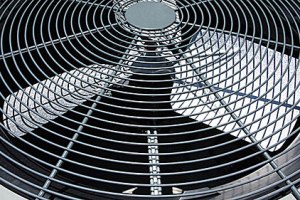I recently read an article in a local HVACR magazine that somewhat addressed this problem, which I guess we all should have foreseen coming because R22 is getting very scarce and its price is skyrocketing.
According to the article, many contractors have started adding R410a to R22 systems that have experienced refrigerant losses. Apparently, contractors say they have been told by their suppliers and even some refrigerant manufacturers reps that this is a viable plan. The article also states refrigerant manufacturers are simply discouraging the practice.
I guess I was blindsided by the advent of this happening because I know the great differences between the refrigerants. I just thought no one would be foolish enough to try such a thing. But if you don’t know and you’re desperate, I guess anything becomes possible.

Anyhow, I sent an email to a major refrigerant manufacturer’s engineering department to ask some questions. After a couple days, a woman called me. Her first reply was typical, “We don’t endorse the mixing of refrigerants.” Ooh, that’ll stop them!
That wasn’t enough for me so I continued to press for answers. I was then told you can’t return mixed refrigerants for reclaim because they can’t be separated and will have to be destroyed. Again, since so few contractors are recovering R22, that isn’t much of a concern.
Next, I was told there are no charging charts for unknown blends of refrigerants. But since so few service techs rely on charging charts, that issue is moot.
After that I was told, “The pressures of R410a are much higher so any leaks will become more pronounced.” Not too strong of an argument.
And finally, I was informed R410a will make any rubber seals (such as in Schrader valves) smaller, again resulting in more leaks.
Was that it? Does it just come down to more leaks and recovery problems? Well, she couldn’t answer the only question I asked, “Will R22 evaporate under the much higher vapor pressure of R410a?”
Understand this: The mineral oil in a compressor has a vapor pressure. Yet, when you introduce R22 to the mineral oil, the lower vapor pressure of the oil doesn’t lower the vapor pressure of the refrigerant. Yet, the company spokesperson assured me that mixing R410a and R22 combines their pressures and reaches a lower median.
Is that true? Not according to the gas laws I used to teach. Rather, the books I taught from say that each refrigerant reaches its own vapor pressure. If that’s so, then what R22 there is in the system can never evaporate under the higher suction pressure of R410a. It will just flood back to reduce the compressor life and will greatly reduce the system capacity.
Do I have an answer? No, but I suspect that mixing the two refrigerants is a terrible idea. The refrigerant manufacturers representative couldn’t give me a definitive answer because she said nobody has simulated such a condition to see what actually happens, plus she wasn’t sure anyone would have the time to do so. Meanwhile, hundreds, thousands and soon millions of air conditioners may be contaminated in this way.
She said she’d get back to me. You’re reading this article because she didn’t.



